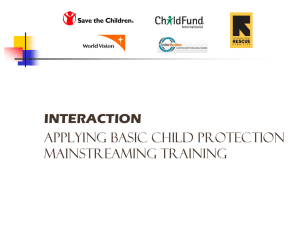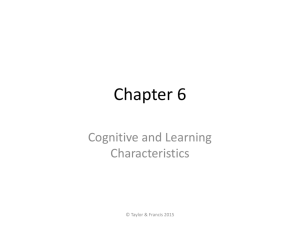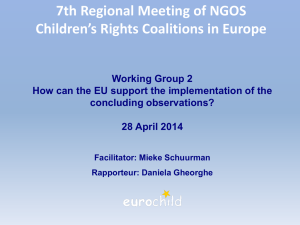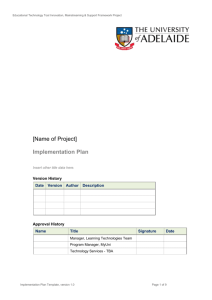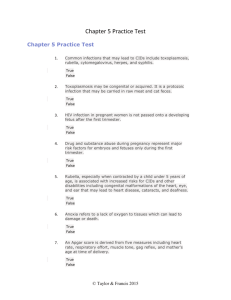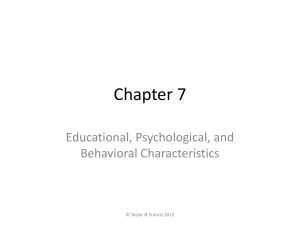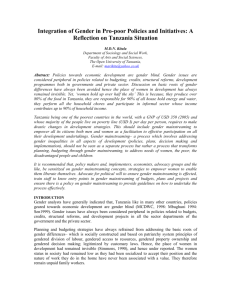Chapter 12 Practice Test
advertisement
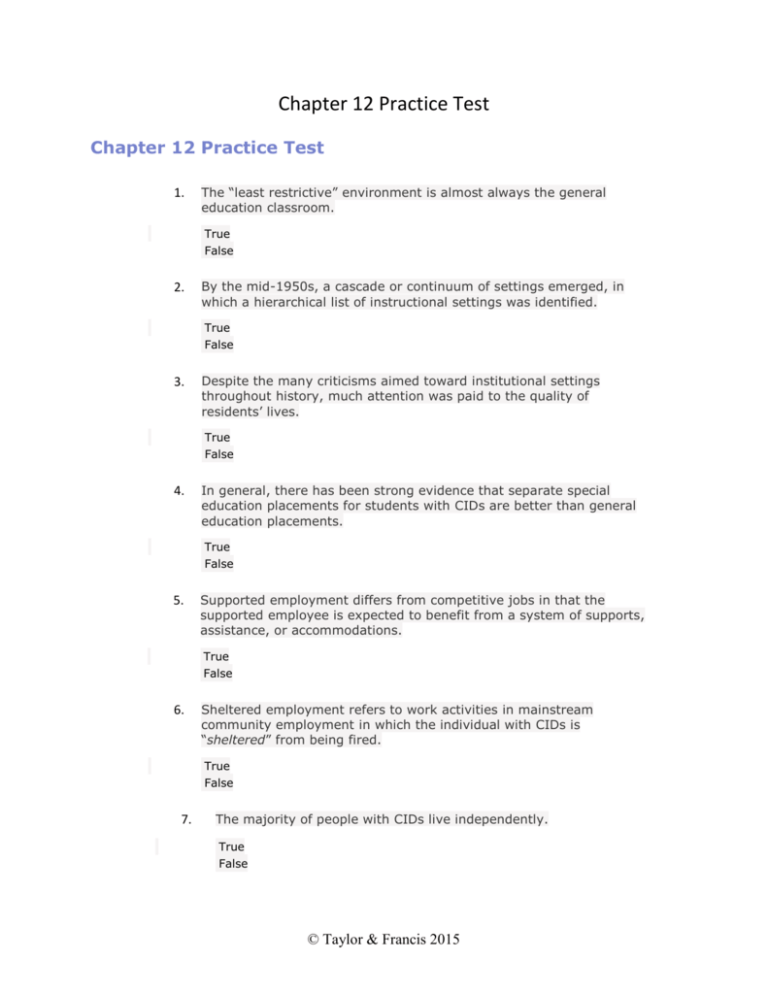
Chapter 12 Practice Test Chapter 12 Practice Test 1. The “least restrictive” environment is almost always the general education classroom. True False 2. By the mid-1950s, a cascade or continuum of settings emerged, in which a hierarchical list of instructional settings was identified. True False 3. Despite the many criticisms aimed toward institutional settings throughout history, much attention was paid to the quality of residents’ lives. True False 4. In general, there has been strong evidence that separate special education placements for students with CIDs are better than general education placements. True False 5. Supported employment differs from competitive jobs in that the supported employee is expected to benefit from a system of supports, assistance, or accommodations. True False 6. Sheltered employment refers to work activities in mainstream community employment in which the individual with CIDs is “sheltered” from being fired. True False 7. The majority of people with CIDs live independently. True False © Taylor & Francis 2015 8. LRE stands for _______. Least Restrictive Environment. Legal Regulations and Equity. Legal Realistic Education. Least Restrictions Education. 9. ______ proposed that a continuum of supports was far more consistent with an educational model than a continuum of placements. Reynolds Blatt Deno Will 10. From the mid-1970s to approximately 1990 the word _____ was used to refer to simply placing students with CIDs into general education classes. integrated mainstreaming included Least Restrictive Environment (LRE) 11. The “Rachel H. four factor test” established the suitability of a particular placement by balancing four specific instructional issues: 1. the benefits of a general education class (when paired with related services) compared with the benefits of separate, special education classes; 2. the nonacademic benefits of interacting with students without disabilities; 3. the effect of the student with disabilities on the teacher and other students in the classroom; and 4. _______________ the effect and benefits of “included” opportunities during lunch, recess, and physical education. the benefits of “peer tutoring” for students with CIDs. the cost of the integrated programming. the academic benefits of receiving instruction with age-mate peers. 12. ________ provides instructional support for students without separating them from general education classes and peers. © Taylor & Francis 2015 Social Interaction Mainstreaming Physical Space Mainstreaming Least Restrictive Mainstreaming Instructional Mainstreaming 13. ____________ involves deliberate and planful interactions between students with and without disabilities. Instructional Mainstreaming Social Interaction Mainstreaming Physical Space Mainstreaming Least Restrictive Mainstreaming 14. ________ is the legal mandate to educate students with disabilities with their nondisabled peers to the maximum extent possible. The principle of “exportability” Mainstreamed Education Least Restrictive Environment (LRE) Inclusive Education 15. As discussed in your text, a cascade or continuum of educational settings had utility and appeal for many educators from the mid1960s to the mid-1970s. Discuss why this model was appealing during this time and what some of the early criticisms were. 16. Making placement decisions for infants and toddlers is complex and must involve problem-solving discussions with family members. Each placement has advantages and disadvantages. Identify the various placement options for this age group and list advantages and disadvantages of each. © Taylor & Francis 2015 17. As discussed in your text, Catlett (1998) provided a snapshot of how special education for a student with CIDs might look in an inclusive school by surveying parents, teachers, principals, and other educators. Describe this view of inclusion. 18. As discussed in your text, problems arise when teaching skills (e.g., social interactions, communication, and self-control) are taught in developmentally segregated environments. Discuss this dilemma and give specific examples of how this could be problematic. 19. In 1994, a legal principle was established in a case referred to as Sacramento City Unified School District v. Rachel H. Discuss this principle and the four specific instructional issues in Rachel H. four factor test. 20. As outlined in Event Box 12.2, explain how the “principle of exportability” was established and what it means. © Taylor & Francis 2015
